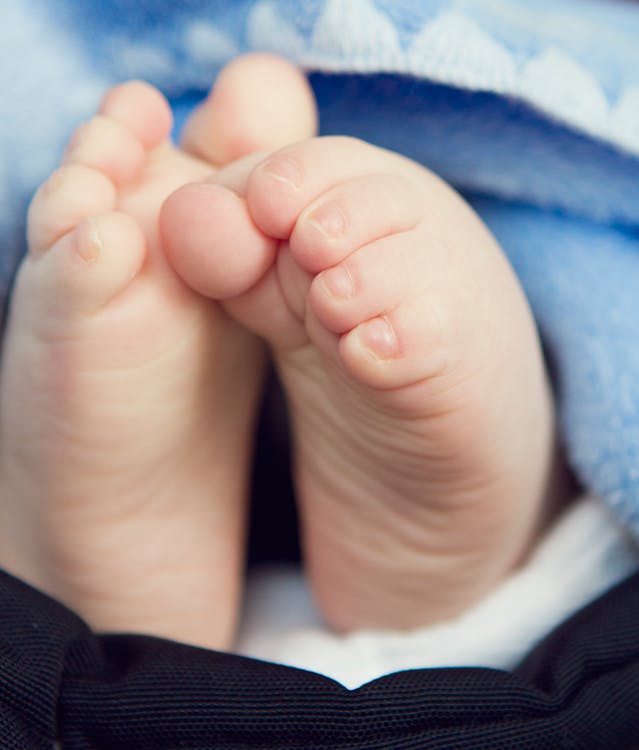Plantar Fasciitis Treatment
For some professional athletes, just altering running shoes can considerably reduce plantar fascia pain. A physical therapist can employ a variety of different taping methods to support the plantar fascia, offering it a possibility to recover. Some shoes can be fitted with inserts. One example is an orthotic, which spans the length of the shoe.
Another option is a heel cup. This insert is developed to support and cushion the heel. Plantar fasciitis is connected with less flexibility in the ankle, Achilles tendon, and calf muscles. Gentle stretching to improve flexibility can make the biomechanics of standing, walking, and jogging less stressful for the plantar fascia.
Utilizing mild pressure, roll the tennis ball backward and forward under the foot. Stand 18 inches away from a wall with feet about 6 inches apart and place hands against the wall, at shoulder height. Without moving feet, lean into the wall, bending the foot and extending the Achilles tendon and calf muscles Sit on the flooring with legs straight in front.
Easy Guidance about Plantar Fasciitis Treatment
Stretches like these last 2, in which the top of the foot and toes approach the shin, are called dorsiflexion stretches. Using a cold-pack or bag of ice to bottom of the foot might offer discomfort remedy for plantar fasciitis. Relief can also be found by rolling the bottom of the foot on a frozen plastic water bottle.
Procedure Principles. For runners, increasing the variety of steps per mileusing a much shorter stride but increasing cadence to maintain speedmay lower the tension on the plantar fascia even though there will be more steps per minute.1.Additional weight puts an increased stress on the plantar fascia tissue. Shedding excess pounds will lighten the load on the body's musculoskeletal system, consisting of the plantar fascia.
This prevents the plantar fascia from resting in a contracted position. (Naturally, lots of people discover these splints difficult to oversleep.). While it is ruled out standard treatment, deep myofascial massage may promote blood circulation and healing. While not all specialists agree, some believe the usage of manual manipulation/mobilization (by a chiropractic specialist or other competent health specialist) in addition to exercise is an effective way to treat plantar fasciitis.2, Individuals with consistent, moderate to extreme cases of plantar fasciitis, may utilize these non-medical treatments in combination with medications, injections, or surgical treatments.
Plantar Fasciitis Treatment for Local Customer Service - Tactics from The Experts

Medications are not a cure for plantar fasciitis and ought to be utilized in combination with other treatments. Non-steroidal anti-inflammatory drugs are utilized to lower swelling and inflammation, and are recommended for patients experiencing moderate to serious pain (Over At This Website). NSAIDs include aspirin (e.g. Bayer), ibuprofen (e.g. Advil), naproxen (e.g. Aleve), and cox-2 inhibitors.
dexamethasone) through healthy skin to the sore area.1 Iontophoresis may be recommended to patients with plantar fasciitis who can't tolerate injections or want to prevent injections. If non-medical treatments and medications do not offer remedy for plantar fasciitis, clients may think about injections. 1. Wellenkotter J, Kernozek TW, Meardon S, Suchomel T.

Int J Sports Medication. 2014; 35( 9 ):779 -84.2. Bronfort G, Haas M, Evans R, Leininger B, Triano J. Efficiency of manual therapies: the UK evidence report. Chiropr Osteopat. 2010; 18:3.3. Clar C, Tsertsvadze A, Court R, Hundt GL, Clarke A, Sutcliffe P. Medical effectiveness of manual therapy for the management of musculoskeletal and non-musculoskeletal conditions: systematic evaluation and upgrade of UK proof report.
Some Examples Of Plantar Fasciitis Treatment
The plantar fascia is a long, thin ligament present along the bottom of the foot that creates the arch of the foot. It extends from the heel bone, and then divides and fans out to attach itself to the toes. Plantar fasciitis is a condition where the plantar fascia ends up being irritated from overstretching or overuse, causing pain in the heel and bottom of the foot.
Plantar fasciitis takes place when you strain or aggravate the plantar fascia ligament. Repeated stress can result in tiny tears in the ligament, leading to discomfort and swelling, which can make strolling hard. Strains can happen due to: High or low foot arch Weight problems or abrupt weight gain Tight Achilles tendon which links the calf muscles to the heel Beginning a new activity or increasing the strength of an activity Wearing incorrect shoes with soles that are too soft, do not fit well or offer poor arch support The significant problem of plantar fasciitis is discomfort and tightness in the heel and foot.
Your physician might watch how you stand and walk, and examine related conditions such as high arches. X-rays of the foot can be taken if your doctor believes a tension fracture, a hairline fracture in the bone, or other related conditions such as a heel spur, which is extra calcium deposit on the heel bone.
What is Plantar Fasciitis Treatment? A definition and suggested readings
Conservative treatment measures consist of: Rest: Rest is the primary step that is thought about for lowering discomfort and preventing additional damage to the ligament. Ice: Rolling your foot over ice can be really efficient in decreasing swelling, and is advised for 20 minutes, 3-4 times a day Medications: NSAIDs (non-steroidal anti-inflammatory drugs) may be prescribed for relief of pain and swelling Exercise: calf stretches and plantar fascia stretches work in relieving pain A steroid injection might be administered into the plantar fascia for decreasing discomfort and inflammation Helpful shoes and orthotics may likewise be recommended to minimize the pain while walking or standing Night splints can be recommended by your medical professional to help extend the plantar fascia while sleeping Physical therapy might be suggested for guideline on extending exercises, massage and ice treatments PT may utilize extracorporeal shockwave therapy (ESWT), which utilizes high-energy shockwave impulses to stimulate recovery of the damaged plantar fascia tissues Surgical treatment is thought about only if conservative therapy does not supply effective relief after 12 months.
Gastrocnemius recession: Tight calf muscles or gastrocnemius muscles can strain the plantar fascia. To launch this stress, your cosmetic surgeon will surgically extend the calf muscle, and increase the motion of the ankle (Next). The surgery can be carried out by open cut or endoscopically through a little cut by utilizing an endoscope, which is a long instrument with a little cam attached.
Your surgeon will partly cut the plantar fascia ligament to eliminate the tension. The surgery can be performed endoscopically but open incision is easier to carry out and is associated with lower risk of nerve damage. Issues are unusual following surgery to treat plantar fasciitis, however similar to any surgical treatment, they can occur.
The Basics of Good Plantar Fasciitis Treatment
If you are experiencing signs of plantar fasciitis, comprehensive treatment from our foot professionals is offered at ORA Orthopedics. As the biggest and most innovative orthopedic practice in the Quad Cities, ORA Orthopedics offers the best choices in care to kids and grownups with a large selection of musculoskeletal conditions, including plantar fasciitis and other uncomfortable or painful foot issues (Click Reference).
This condition is generally marked by higher foot discomfort and tightness after not throughout workout or extended durations of inactivity. Plantar fasciitis might likewise trigger bone spurs, or little boney growths, to establish on the heel bone. The skilled physicians and staff at ORA Orthopedics' Foot and Ankle Center of Quality are trained in the latest treatment methods and offer patient-focused care that is second to none in the Quad Cities.
 Corns form on the toes and calluses on the soles of the feet. The pressure and friction can burn or otherwise be painful and might be relieved padding or by moleskin on the affected regions. Never never apply home remedies, and cut corns or calluses with any instrument, except under a podiatrists instructions. Wear dry shoes that allow air to circulate around your feet (tight, enclosed, moist shoes contribute to fungal toenail infections). Prevention Follow foot care guidelines and you can head off many foot fungus problems.
Corns form on the toes and calluses on the soles of the feet. The pressure and friction can burn or otherwise be painful and might be relieved padding or by moleskin on the affected regions. Never never apply home remedies, and cut corns or calluses with any instrument, except under a podiatrists instructions. Wear dry shoes that allow air to circulate around your feet (tight, enclosed, moist shoes contribute to fungal toenail infections). Prevention Follow foot care guidelines and you can head off many foot fungus problems.